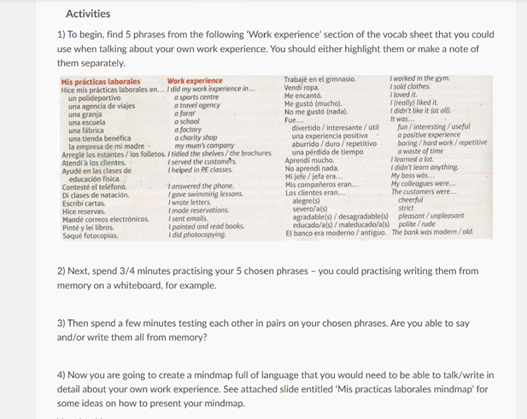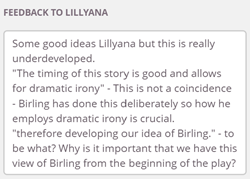February Blog 2022
Blended learning protocols: how these support SEN students with a particular focus on Year 10
We started our main Blended Learning journey in the spring term of 2020, way before we had even considered what the effect that a global pandemic would have on education. As we come out of all restrictions, now seems an appropriate time to revisit our Blended Learning Protocols and develop how they now fit into our everyday teaching ethos, rather than being something to support learning during the pandemic.
Our protocols themselves remain unchanged, with just the removal of 4b – the section that refers specifically to students isolating for COVID reasons. The protocols can be found in the Curriculum planning folder in the itslearning Staff Room: LINK
In the November Blog we revisited and explored some of the main CFU activities that we can use in the classroom and as part of our day-to-day teaching: LINK
Since writing that previous blog, SLT have revisited several key documents on the subject of planning and SEN provision, including Barak Rosenshine’s Principles of Instruction and Hampshire’s SEN Support Guidance for Schools. Both of these documents are vital reading when we consider our planning of the curriculum and also when we consider individual lessons, so we can support all learners to make progress inside and outside of the classroom.
BL protocol 1: All plans are to be on itslearning and bespoke to individual classes
We will all agree that the makeup of all classes is different and changes constantly. Therefore, we need to consider this individual makeup when planning lessons. The ability to collaboratively plan and share lessons through our itslearning mastercourses has had a notable impact on the quality of planning that departments are doing; however, these planned components will not be suitable for all classes to follow at the same speed in the same way. Review notes support our understanding of the progress of a class and where things need to be amended. We should also be adapting and adding in activities as suited for our individual classes and students.
Review notes also help in the longer term. When planning an upcoming year 9 topic recently I was able to review the notes I made last year. I had identified the issues that the students were having, and therefore I was able to adapt the component plans appropriately this year – I await the results of these developed plans but have the strong belief that they will improve the students understanding. I know Barbara has also used the review notes to help plan the same topics next year- a great way to use the note section.
In recent monitoring I saw the following review note in a Spanish lesson – clearly identifying the issue that the lower attaining students are having. This can be used for reflection in the coming weeks and addressed in planning for future cohorts.

BL protocol 1: All plans … ensure that future learning links to or builds on the learning from the previous lesson.
Extracts from Rosenshine’s Principle 1:
The most effective teachers in the studies of classroom instruction understood the importance of practice, and they began their lessons with a five- to eight-minute review of previously covered material
Over the past few years, we have worked hard at certain pedagogical practices. The ‘Do Now’ Task is embedded into lessons well, but are we using this time effectively in all of our lessons? In Rosenshine’s research, he suggests that this time is best suited for review to strengthen previous learning rather than the introduction of new concepts. This concept of over-learning is essential for many of our SEN students, who need constant revisiting of content in order to comit this information to their long-term memory.
BL protocol 2: The activities … must be explicitly clear with the task that is to be completed.
SEN Guidance Section 6.3:
- Curriculum provides opportunities for repetition, over-learning and consolidation of skills at an appropriate level
- Strong emphasis on meta-cognitive approaches e.g. how can you help yourself remember this
- Use of strategies for scaffolding of literacy- based tasks e.g. writing frames, sequencing, cue cards and highlighting.
Chunking and scaffolding. Again, two term that we are all familiar with. Are these planned well into our components of learning?

In the example plan here we see opportunities for students to rehearse and go over learning several times and the teacher has built in several opportunities for live feedback to individuals and pairs.
Breaking down tasks in this way with a numbered list helps it to be simple and clear and aids SEN students in seeing exactly what they need to do for each part. Instructions here are kept short and simple.
BL protocol 3: …independent learning (homework)
… can be planned as small CFU tasks such as self-marking tests.
… can be response to feedback that might have been given on an itslearning assignment.
Extracts from Rosenshine’s Principle 6:
Effective teachers also stopped to check for student understanding. They checked for understanding by asking questions, by asking students to summarize the presentation up to that point or to repeat directions or procedures, or by asking students whether they agreed or disagreed with other students’ answers.
Another reason for the importance of teaching in small steps, guiding practice, and checking for understanding … comes from the fact that we all construct and reconstruct knowledge as we learn and use what we have learned. We cannot simply repeat what we hear work for word.
Extract from Principle 7:
It is important that students achieve a high success rate during instruction and on their practice activities. Practice, we are told, makes perfect, but practice can be a disaster if students are practicing errors! If the practice does not have a high success level, there is a chance that students are practicing the learning errors. Once errors have been learned, they are very difficult to overcome.
A low stakes self-marking quiz gives students a high success rate. The same quiz can be used several times through the course a of topic to reinforce understanding. Itslearning has the option to randomise question order and the order of answers within a question.
BL Protocol 4: All main CFU or formative tasks are to be put on itslearning as an assignment or task. These should be planned into the sequence of learning.
Feeback that is specific and formative have a hugely beneficial effect on students, particularly SEN and LA students. Action based comments, with learning questions, are vital to moving a student's understanding forward. With feedback for SEN, ensure that the action point is specific and clear, so they know exactly what needs to be done. Be sure to all time for student response.

BL protocol 5: Additional resources can be added in over time, to allow for greater depth. Think about extra resources such as a week-by-week revision guide.

